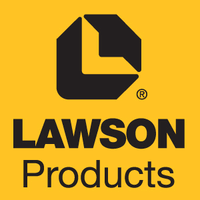It was a dull week for insider trading, duller even than the miserly week before. Last week would make you think it was a crime to buy your own company’s stock. Of course, we are in the throes of the 1st quarter earnings blackout, but insiders still find ways to unload their holdings though. There were a couple of noteworthy buys.

Buys
JPM JPMorgan Chase & Co (Mkt Cap: $338.9B) – Director Mellody Hobson Mellody steps up buying JPM after the stock bounced 5% on 1st quarter earnings surprise, spending $2.2M to purchase 19,700 at $111.30. This increased her holdings by 31.2%. That might have meant something but six insiders also sold $28.1 million worth.
LAWS Lawson Products (Mkt Cap: $274.0M) Chairman of the Board, John King must have liked what he saw as he bought $1.2M worth of stock after the Company reported a healthy leap in earnings. Lawson Products(LAWS), a product supplier to the maintenance, repair, and operations market, reported Q1 adjusted earnings of $0.48 per share, up from $0.25 in the same period a year ago and topping the estimate of $0.29 from analysts polled by Capital IQ.
Total revenue of $91.3 million was up from $84.4 million in the same period ending in March a year ago and topped the Street projection of $89.8 million.
Not much of interest here either. Insiders continue to unload stock using the Rule 10b5-1 loophole that allows insiders to sell stock right through any imposed earnings blackout period. It’s hard to read anything much into these sales other than the fact, that I would rather see insiders buying than selling their stock. The timing of these transactions shed little light on short term price movements, though.
In this report, we examined open market purchases from employees and directors. Insiders sell stock for many reasons, but they generally buy for just one – to make money. As a standard, we only look at material amounts of money, $200 thousand or more, as anything less could just be window dressing. The bar is different from selling because the natural state of management is to be sellers. This is because most companies provide significant amounts of management compensation packages as stock. Therefore, with selling, we analyze for unusual patterns, such as insiders selling 25 percent or more of their holdings or multiple insiders selling near 52-week lows. Another red flag is large planned sale programs that start without warning. We generally ignore 10 percent shareholders as they tend to be OPM (other people’s money) and not the SMART money we are trying to go to school on. Although this info is available for free from the SEC’s Web site, Edgar, we subscribe to the Washington Service as they provide a way to manage and make sense of the vast realms of data.
To learn more about our strategy, visit our website here. We welcome your comments on our analysis. We may own positions, long or short, in any of these names and are under no obligation to disclose that. If you would like to hear more about how you can get involved with the Insiders Fund, please schedule some time on my calendar

 It was a dull week for insider trading, duller even than the dull week before. Last week would make you think it was a crime to buy your own company’s stock. Of course, we are in the throes of the 1st quarter earnings blackout, but insiders still find ways to unload their holdings though.
It was a dull week for insider trading, duller even than the dull week before. Last week would make you think it was a crime to buy your own company’s stock. Of course, we are in the throes of the 1st quarter earnings blackout, but insiders still find ways to unload their holdings though.